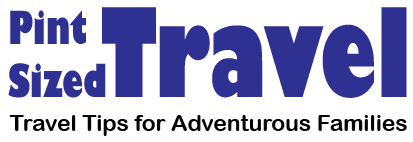Last month, a very dear friend of mine bit the bullet and took her family on a plane so that they could continue to enjoy an annual ski trip. It was a much-needed vacation, and a step toward normalcy after many months of anything but normal. At the time, she admitted that she was extremely anxious about her travel decision. Flying felt super risky because of the lack of social distancing within such a small enclosed space. Especially as airlines were once again trying to fill every seat, and were no longer keeping middle seats open. But, armed with face masks, and a lot of hand sanitizer, they made it through unscathed. More importantly, they quarantined upon their return, and tested negative after their trip.
Her vacation got me thinking about how face masks will continue to be an important component of family travel moving forward. After all, the only thing we know about current vaccines is that they help mitigate serious illness. There is no data (yet) that says they stop the spread of coronavirus. It is therefore more than possible for a vaccinated person to still become infected and pass it on to others.
So, what is the state of play for travel and face masks?
Face Masks on Planes
My friend’s anxiety over flying seemed more than justified. There have been countless posts and articles over the past several months about airline passengers wearing their facemasks wrong, or outright refusing to wear one at all. This, despite the fact that most airlines began requiring the use of facemasks in May of last year. The problem has been enforcement. Without a federal mandate, airlines have had their hands somewhat tied. In some instances, all they have been able to do is ban passengers from future air travel.
Fortunately, things changed at the end of last month, following a mandate from the new administration. Building on an order announced by President Biden, the CDC and TSA now require individuals to wear face masks on airplanes. They also require masks throughout all commercial and public transportation systems, including airports. Refusing to wear a mask is not only a violation of federal law, but can result in fines between $250 and $1,500.
State Wide Mandates
Ironically, while face masks are now a legal requirement for air travel, the same cannot be said for state mandates. Some states have firm orders in place. Others have let them lapse (like North Dakota), or issued orders based on local COVID-19 case rates (like Mississippi). Then there are those states, like Alaska, Arizona, Georgia, Idaho, Missouri, Nebraska, Oklahoma, South Carolina, and Tennessee, that have refused to implement any statewide requirements. Preferring instead, to allow counties and cities to impose their own local orders.
On the flip side, you have Florida, who won’t allow its local governments to penalize noncompliance for city or county-issued orders. And Wisconsin, who is fighting over whether state mask mandates are legally allowed.
The long and short of it is, mask mandates across the U.S. are complicated. It is therefore important that you fully understand state restrictions before you book any domestic travel for your family.
Doubling Up
One thing that stood out in my friend’s Facebook post was the photo of her family on the plane. Each person was wearing not one, but two masks. They had an N95 mask as their first layer and a standard disposable medical mask as their second layer.
Doubling up on face coverings is nothing new to me. Right now, both of my boys are on a ski team that has required them to use two neck gaiters ever since the beginning of the ski season. However, I had assumed this was because neck gaiters are typically thinner than the two-or-three-layer cloth masks that are standard accessories these days. However, this may, or may not be the case. You see, there is a growing trend to use two masks for any public setting.
According to a recent Washington Post article, new coronavirus variants have experts recommending that the public start wearing two face masks any time that they are indoors, or not able to socially distance. Two masks could mean two multi-layered cloth masks, or a cloth mask over the top of an ASTM certified medical mask. In particular, the use of a disposable mask (like a medical mask), underneath a tightly fitted cloth mask, is estimated to block 90 percent of infectious particles.
At the end of the day, two face masks offer a much stronger filter against small particles. This makes them a great option for family travel. However, it is important that, at the very least, the top layer is well-fitted to your face. There should be no gaps around your nose and cheeks. A good test is to put on some glasses (sunglasses or prescription) and see if they fog up. If they do, it means air is escaping from the top of your mask and you need to readjust or find a better fitting mask.
Happy Travels!
